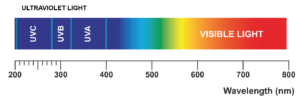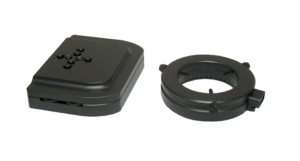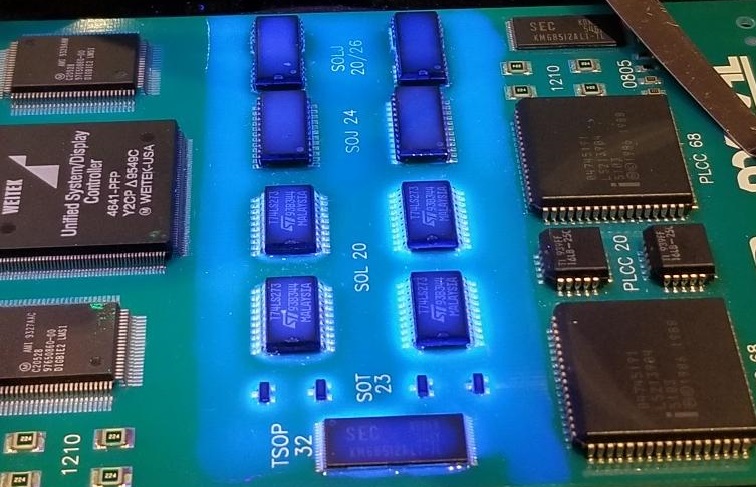Ring light illumination is common with stereo microscopes. But knowing whether or when to use a UV, or white light ring illuminator may not be obvious. Let’s explore some common uses for UV ring lights and what sets them apart from other light sources.
UV ring light applications
In electronics manufacturing, conformal coatings are often used to protect sensitive circuit boards and components from harsh environmental exposure. It is important that the coatings completely cover the sensitive components to be fully protective. Under white light illumination, these conformal coatings are colorless and rarely permit inspection. However, they may contain trace amounts of elements that “light up” (fluoresce) when a UV light shines on them. This glow under UV light allows technicians to confirm complete and intact conformal coating coverage of areas requiring protection.
UV ring lights function by emitting light in the UV-A light spectrum, wavelengths that are considered safe for use when viewing a sample. Despite the “safety” of UV ring lights, they should never be operated without the user wearing UV-protective safety glasses and minimizing exposure of skin to the UV light. For optimal operating results, UV illumination works best when the ring light is about six inches above the sample, and the inspection is performed in a darkened area (ambient light reduces the intensity of the fluorescence).
UV light is used for both observation/inspection and curing of conformal coating. To clarify this difference, the UV-A light used for illumination/inspection/observation far lower energy than the UV light that is used to cure a conformal coating (the difference is approximately 1,000-fold). UV-B and UV-C light are most often used for sterilization protocols.

Ring lights vs. other light sources
Compared to gooseneck light sources, ring lights attach to the microscope nosepiece and help keep the bench surface clear of unwanted accessories. They deliver bright, even illumination to the sample revealing more detail and identifying defects. Additionally, recent improvements in ring light technology have transitioned from fluorescent to LED light sources, from a single ring of LEDs to double or even triple rings, and added dimming control, quadrant control, and more.

What makes UNITRON’s LED580 UV/Daylight Quadrant Ring Illuminator best in class?
The LED580 UV/Daylight Quadrant Ring Illuminator (P/N 15859-B) combines the best of both light sources. By producing both white and UV light, it allows the operator to inspect the sample for defects with white light, and then to perform higher magnification inspection of the conformal coating with UV light further ensuring complete, intact coverage and the absence of air bubbles or voids created during the coating process.
For more information about the LED580 UV/Daylight Quadrant Ring Illuminator or other illuminators for LX Microscopes by UNITRON, contact Customer Support at 631-543-2000 or info@unitronusa.com.



